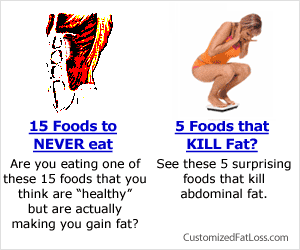The shocking truth about your health | Lissa Rankin | TEDxFiDiWomen

Lissa Rankin, MD is an OB/GYN physician, author, keynote speaker, consultant to health care visionaries, professional artist, and founder of the women’s heal…
Categories: Uncategorized Tags: about, Health, Lissa, Rankin, shocking, TEDxFiDiWomen, truth
Eye Health
Eye Health.
What are eyes.
Eyes are organs that detect light, and send signals along the optic nerve to the visual and other areas of the brain Complex optical systems with resolving power have come in ten fundamentally different forms, and 96% of animal species possess a complex optical system.
The simplest “eyes”, such as those in unicellular organisms, do nothing but detect whether the surroundings are light or dark, which is sufficient for the entrainment of circadian rhythms. From more complex eyes, retinal photosensitive ganglion cells send signals along the retinohypothalamic tract to the suprachiasmatic nuclei to effect circadian adjustment.
Eyes Condition:
Acanthamoeba Keratitis:
Poor contact lens hygiene often causes this rare but serious eye infection.
Allergies:
Itchy, red, swollen, tearing eyes may mean eye allergies. Get tips for relief.
Amblyopia (Lazy Eye):
Amblyopia usually develops in young children and can mean permanent vision problems if not treated early.
Bell’s Palsy:
This condition causes sudden paralysis of one side of the face. Because of inability to blink, you may develop severe dry eye.
Blepharitis:
Inflammation of the eyelids can cause chronic eye irritation, tearing, foreign body sensation and crusty debris.
Cataracts:
If you live long enough, you will eventually have cloudy vision from cataracts. Learn about causes and about cataract surgery, which replaces your eye’s natural lens with an artifical one.
Eyes Diseases:
CMV Retinitis:
About 80 percent of adults have been exposed to the cytomegalovirus (CMV), but it mostly affects people with poor immune systems, such as AIDS patients.
Conjunctivitis (Pink Eye):
What you can do about redness, swelling, itching and tearing of pink eye.
Diabetic Retinopathy:
Diabetes causes sight-threatening retinal degradation.
Eye Herpes:
Ocular herpes is a recurrent viral infection that may lead to serious vision loss.
Ocular Hypertension:
High eye pressure has no symptoms, but it is easily detected in an eye exam. Take care of it before it develops into glaucoma.
Retinitis Pigmentosa:
Poor night vision and a narrowing field of vision beginning in childhood herald this rare disorder.
Stargardt’s Disease (STGD):
Children and young people can develop Stargardt’s disease, often leading to central vision loss.
Vision Problems:
Astigmatism:
Don’t despair: distorted vision is usually correctable with eyeglasses, contacts or surgery.
Double Vision (Diplopia):
Many conditions cause double vision, including stroke and cataracts.
Higher-Order Aberrations (HOAs):
Higher-order aberrations are vision errors causing poor night vision or double images.
Hyperopia (Farsightedness):
Farsighted people can have poor near vision or blurred vision at all distances.
Myopia (Nearsightedness):
Nearsighted people can see fine up close, but distant objects are a blur.
Peripheral Vision Problems:
“Tunnel vision” can have various causes, including glaucoma.
Presbyopia:
Presbyopia means difficulty seeing close up for people 40 and older.
EXAMINATIONS FOR EYE PROBLEMS:
The following are common exams for eye problems that your eye doctor or healthcare provider may perform on you:
Fluorescein or Rose Bengal staining:
To perform this exam, your eye care professional or healthcare provider may put special eye drops into your eyes. Using a special light, they can see if there are any problems with the surface of your eyes. This may be done if eye prlblems include having eye pain, trauma, or a feeling of itchy eyes.
Ophthalmoscopy:
This is when your healthcare provider uses an ophthalmoscope, to look at the back of your eye. They can see the structures of the eye, such as the lens, retina, blood veins and vessels. Your healthcare practitioner may do this in the office, whenever you notice any eye problems.
Pupil dilation:
The pupil is widened with special eye drops, to allow your healthcare provider or eye care professional to look more closely at the back of your eye.
Tonometry:
This test is performed when the examiner wants to check the fluid pressures in the eye. It may be using a manual, hand-held device, or a more modern machine that blows a “puff” of air into your eye. Increased pressure in your eye may be a sign of glaucoma.
Visual acuity test:
Your eye examiner will use a chart to test how well you can see at different distances. This test may be performed when you are getting new glasses or contact lenses.
Things you can do about eye problems:
● To prevent or treat a blockage of the eye’s drainage system: If you have a history of sinus infections, this may cause a blockage in your eye’s drainage system. Make sure to seek healthcare advice if you think you are developing a sinus infection, and take oral antibiotics, if your healthcare provider suggests.
● Use warm compresses to help your eye to drain, if you have any type of eye infection.
● Surgery may be recommended for your eye problems if there is an extensive blockage. This also depends on many factors, including your health condition, and the location of the blockage. Discuss this with your healthcare provider.
● If you have tearing as a result of allergies of irritants in the air, try to eliminate them from your work or home environment. An air cleaner may be necessary.
● If you have a dry eye syndrome, ointments or artificial tears may help.
A portal for women which contain Beauty Tips in Urdu, Dress Designs, Fashion Tips, Mehndi Designs, Makeup Tips, Fashion Games and much more.
A portal for women which contain Beauty Tips in Urdu, Dress Designs, Fashion Tips, Mehndi Designs, Makeup Tips, Fashion Games and much more.
Find More Health Articles
Categories: Uncategorized Tags: Health
Health Fact
Health Fact
2
There are 2.5 trillion (give or take) of red blood cells in your body at any moment. To maintain this number, about two and a half million new ones need to be produced every second by your bone marrow. That’s like a new population of the city of Toronto every second.
3
Considering all the tissues and cells in your body, 25 million new cells are being produced each second. That’s a little less than the population of Canada – every second !
4
A red blood cell can circumnavigate your body in under 20 seconds.
There are 2.5 trillion (give or take) of red blood cells in your body at any moment. To maintain this number, about two and a half million new ones need to be produced every second by your bone marrow. That’s like a new population of the city of Toronto every second.
A portal for women which contain Beauty Tips in Urdu, Dress Designs, Fashion Tips, Mehndi Designs, Makeup Tips, Fashion Games and much more.
>
5
Our blood is on a 60,000-mile journey. 6 7 Nerve Impulses travel at over 400 km/hr (25 mi/hr). 8 Our heart beats around 100,00 times every day. 9 Our eyes can distinguish up to one million color surfaces and take in more information than the largest telescope known to man. 10 Our lungs inhale over two million liters of air every day, without even thinking. They are large enough to cover a tennis court. 11 We give birth to 100 billion red cells every day. 12 When we touch something, we send a message to our brain at 124 mph. 13 We exercise at least 30 muscles when we smile. 14 We are about 70 percent water. 15 We make one liter of saliva a day. 16 Our nose is our personal air-conditioning system: it warms cold air, cools hot air and filters impurities. 17 In one square inch of our hand we have nine feet of blood vessels, 600 pain sensors, 9000 nerve endings, 36 heat sensors and 75 pressure sensors. 18 We have copper, zinc, cobalt, calcium, manganese, phosphates, nickel and silicon in our bodies. 19 It is believed that the main purpose of eyebrows is to keep sweat out of the eyes. 20 A person can expect to breathe in about 40 pounds of dust over his/her lifetime.
A portal for women which contain Beauty Tips in Urdu, Dress Designs, Fashion Tips, Mehndi Designs, Makeup Tips, Fashion Games and much more.
http://www.undergroundworldnews.com THIS INFO IS HUGE! THIS PROVES THEY ARE COVERING UP THE TRUTH ABOUT #EBOLA BEING AIRBORNE! MAKE VIRAL! This is the link to the original, Canada Public…
Related Health Articles
Categories: Uncategorized Tags: Fact, Health







-SMALL.gif)
